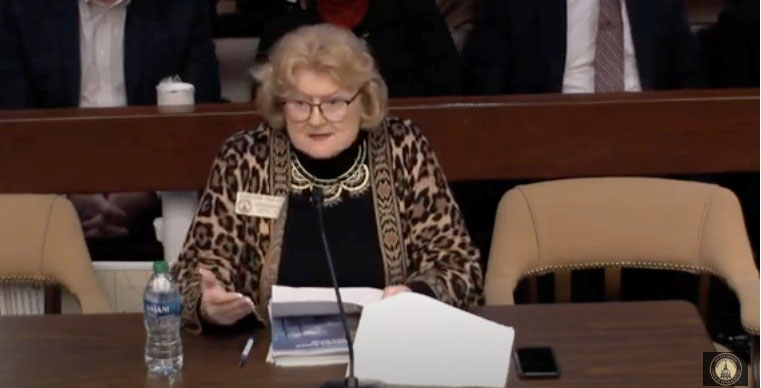Is mining worth the risk of turning the Okefenokee into the next Everglades
Covington, GA – It’s extremely unusual for a Georgia bill to have 91 co-signers. It’s even more unusual for a bill with that much bipartisan support to not make it to the floor for a vote. But, that is exactly what has happened with HB 71.
The bill, assigned to the Natural Resources and Environment Committee, would prohibit surface mining on Trail Ridge, a geologic formation along the southeast section of the Okefenokee National Wildlife Refuge (ONWR). HB 71 came to a halt on March 6, Crossover Day, as it was denied the opportunity for a House vote. Lawmakers heard from local residents, scientific experts, and business leaders during a 2-hour subcommittee hearing on Tuesday.
“In my experience working around the Capitol since the late 1980’s, I’ve never seen a bill with 91 cosponsors, with this level of bipartisan support and with this level of support around the state,” says Mike Worley, president and CEO of Georgia Wildlife Federation.
According to Alice Keyes with One Hundred Miles, the majority support of House members is mirrored by majority support from citizens. A 2022 poll showed 68% of Georgians surveyed are in favor of permanent protection of the Okefenokee, and support increases to 71% from those in South Georgia.
Additional statements recounted the cultural, ecological, spiritual, and economical values of the Okefenokee and the role Trail Ridge plays in maintaining the integrity of the swamp.

Rep. Darlene Taylor (R-Thomasville) speaks of the careful research that led to HR 71, legislation protecting Okefenokee’s Trail Ridge from future mining.
Representative Darlene Taylor (R-Thomasville), author of HB 71, detailed her research and preparation in writing the bill and her personal experience watching destructive activities impact the Everglades.
“Because I did grow up in South Florida, I witnessed what happened to the Everglades…You don’t want that to happen to the Okefenokee. They are now spending billions of dollars to try to fix and repair what’s been done there. It will never, ever be the same again.”
“The Okefenokee is the greatest asset in Charlton County,” says Josh Howard, president of the Friends of the Okefenokee National Wildlife Refuge and lifelong resident of Charlton County. “No mining company can guarantee that their mines will not cause irreparable harm. For many of us the Okefenokee is part of our identity, we may have different temperaments, talents, and convictions, but we are all swampers and identify as such.”
Charlton County resident and pastor, Antwon Nixon, shared the story of Mrs. Deborah Reed, a person of color, who grew up in the rural south during Segregation. As a child, the Swamp served as a place of refuge for her.
Michael Lusk, refuge manager of Okefenokee Wildlife Refuge, described the role Trail Ridge plays in the hydrology of the Swamp remaining intact.
“…the ecosystem that you see there today is essentially the same as it would have been when the first people beheld its dark, flowing waters,” states Lusk. “The geological feature that allowed the Swamp to form in the first place, and allows it to still exist today, is the ancient barrier island known as Trail Ridge, which supports the integrity of the Okefenokee Swamp.”
Dr. Rhett Jackson is a UGA hydrologist and one of more than a dozen leading scientists in the field that have recently questioned the monitoring methodology proposed to measure mining impact on the Okefenokee. According to Jackson, “Groundwater flows from Trail Ridge to the southeastern compartment of the swamp are really important to mitigating the impacts of drought in that part of the swamp.”
The groundwater disruptions from mining activities will increase the probability of wildfire in the swamp and change the ecology of the area.
“If mining continues to move along Trail Ridge, there’s a very high likelihood that mine operations will spur serious drought and fires,” says Jackson. “Droughts also reduce the amount of time that people can use the water trails and change swamp ecology, the balance of plants and animals that live there.”
Opponents of the bill primarily cite issues with property rights and economic development. But those in favor of HB 71 argue that the tourism economy is an important part of the puzzle and would be at risk with mining activity on Trail Ridge.
“For the Okefenokee tourism economy, mining that would hurt the swamp is bad for business,” says Rena Peck, executive director for Georgia River Network.
Cliff Oxford, a Waycross native and entrepreneur, relayed the sentiments of a group of 35 CEOs he brought to the Okefenokee in 2018.
“In 2018, I took 35 CEOs from the Swamp to Sea Tour. And they came and said, ‘Where in the world has Georgia been with this Okefenokee?’ What I would like to do is to talk about how we can bring 3,500 CEOs down to the Swamp. The resource is there. It would be a tremendous mistake to risk …the Swamp.”
There was consensus on both sides of the table that the Okefenokee is worth protecting. But, with experts willing to back both mine and no mine positions, the bigger argument is whether delving into the unknown is worth the risk. As expressed by Howard, “the risk of mining on Trail Ridge for this common mineral (titanium dioxide) is just too great.”

# # #
About Georgia Wildlife Federation
Georgia Wildlife Federation was founded as a sportsman’s organization in 1936 and is Georgia’s oldest conservation organization. Today, members include hunters, anglers, bird watchers, hikers, educators, and all Georgians who are interested in preserving our natural resources and outdoor heritage.

Recent Comments